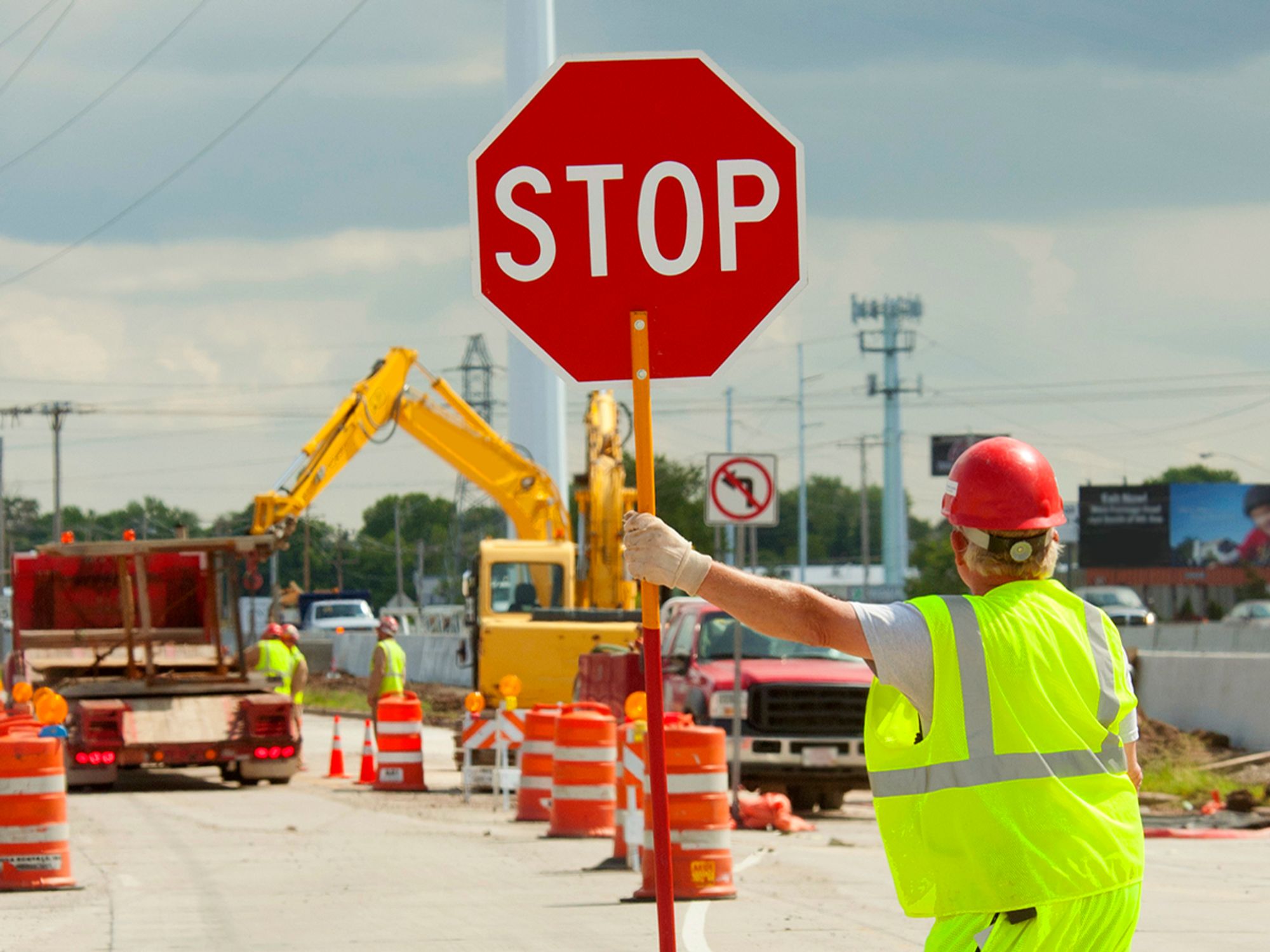Definitions and standards

- All employers with employees that may be exposed to hazards in the work zone must protect employees from hazards encountered while on the job.
- Common hazards that employees may encounter include fall hazards, overhead powerlines, underground electrical lines, excavation cave-ins, carbon monoxide, extreme heat and cold, poor visibility and fatigue.
- Poor worker knowledge due to lack of training or ineffective training is a major cause of work zone injuries, illnesses, and fatalities.
Applicability
All employers with employees exposed to hazards in the work zone.
Emergency responders, clean-up, utility, demolition, construction, and others who work in areas where there are moving vehicles and traffic are exposed to being struck by moving vehicles.
Definitions
- Manual on Uniform Traffic Control Devices for Streets and Highways (MUTCD): Recognized as the national standard for traffic control devices used on all public roads. Part VI of the MUTCD is devoted to temporary work zones. Many state transportation agencies adopt the MUTCD or have regulations that go beyond the MUTCD requirements.
- Work zone: The area between the first warning sign and the last traffic control device. The work zone can also include non-roadway areas (e.g., shoulders and drainages), staging areas, and support areas for the work zone (e.g., temporary batch plants).
Standards and guidance
Employers are required to protect employees from hazards encountered on the job. One way to help do this is provide the proper personal protective equipment (PPE). In addition to head, eye, hearing, respiratory, and foot protection PPE, there is one other important type of PPE that is often needed by employees in construction work zones: high-visibility clothing. For these warning garments, the Occupational Safety and Health Administration’s (OSHA) 29 CFR 1926.201 requires compliance with Part VI of the MUTCD (1988 Edition, Revision 3, or the Millennium Edition).
OSHA regulations require adherence to the MUTCD for all traffic control signs and devices used for protecting construction workers. Also, flaggers must wear warning garments that meet requirements of the MUTCD per 1926.201(a). There are no OSHA requirements specific to the individual worker doing road work.
If the road work is a federal project, or the work is done for a state, county, or municipality, the inclusion of the requirements for warning garments in MUTCD will be enough to require construction companies to provide American National Standards Institute (ANSI) approved safety vests.
Hazards
Highway, road, street, bridge, tunnel, utility, and other workers are exposed to a variety of hazards inside and outside a work zone.
- Motor vehicle hazards. Motor vehicle traffic is not the only concern; workers may also be injured or killed by heavy equipment. Fatalities may also occur when heavy equipment rolls over.
- Heavy lifting. Many workers encounter ergonomic issues due to heavy lifting. Sitting for long periods of time while operating equipment can also cause lower back problems.
- Fall hazards. There are often fall hazards that can cause serious injuries and fatalities. These hazards can be due to working on top of equipment or on bridges or overpasses.
- Overhead powerlines. Contact with overhead power lines is a serious hazard on many work zones. Construction equipment often works below these power lines and can expose operators to electrocution.
- Underground electrical lines. Excavations are common at work zones and when digging there is the chance contact with electrical lines. This also poses a shock and electrocution risk for operators of heavy equipment.
- Excavation cave-ins. If excavation work is often done in work zones, cave-ins are a serious problem. Unstable soil types need to be dealt with as well as heavy equipment operating near the excavation, which can put pressure on the wall of the trench.
- Carbon monoxide. Employees are often exposed to carbon monoxide from heavy equipment operating in the work zone and from motor vehicles passing through the work zone. Employees working in excavations can be exposed at higher levels.
- Extreme heat and cold. Both extreme heat and cold can cause major problems. Employers and workers must be aware of the signs of heat and cold stress.
- Poor visibility. Darkness, rain, and fog may cause poor visibility. Motor vehicles and heavy equipment can strike employees on foot in the work zone.
- Fatigue. Injuries occur more often during evening shifts and during night shifts, and fatigue is a major factor. A lack of sleep can also increase physical and mental stress, and may contribute to irritability, impaired decision making, decreased concentration, and lack of motivation.
